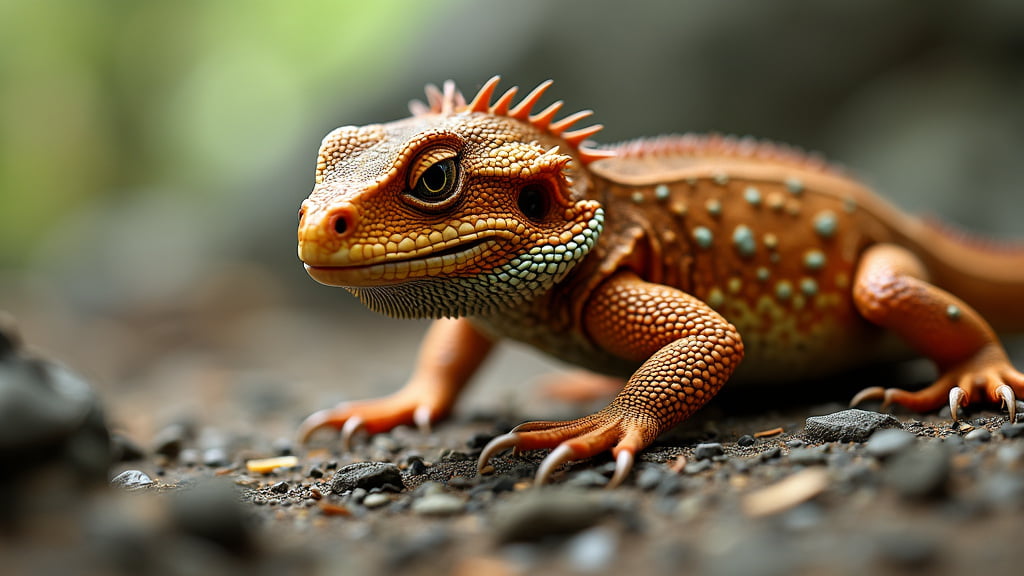Are you fascinated by the idea of caring for a bearded dragon? One of the critical aspects of being a responsible pet owner is tracking your bearded dragon’s age. Properly assessing their age can help you cater to their needs more effectively, ensuring they live a happy and healthy life. Whether you’re a new owner or a veteran reptile keeper, this guide will delve into spot-on techniques to keep tabs on your bearded dragon’s age. Let’s start this enlightening journey together!
Understanding Bearded Dragon Lifespan
Knowing the lifespan of your bearded dragon is the first step in tracking their age effectively. On average, these captivating creatures can live between 10 to 15 years with proper care. Some may even reach their late teens, depending on various factors such as diet, habitat, and overall health. Having owned bearded dragons for years, I can vouch for the importance of understanding their longevity to provide tailored care throughout their stages of life.
Factors Influencing Lifespan
It’s essential to keep in mind that numerous elements impact the lifespan of your bearded dragon. Here are some key factors to consider:
- Diet: A balanced diet rich in protein, vegetables, and calcium supplements promotes longevity.
- Habitat: Providing a spacious, clean, and temperature-regulated environment is crucial.
- Health Care: Routine vet check-ups and prompt attention to health issues ensure your dragon stays robust.
- Genetics: Some dragons might be genetically predisposed to longer or shorter lifespans.
Methods to Estimate Bearded Dragon Age
Accurately determining the age of your bearded dragon can be a bit tricky without detailed records. However, there are several methods you can use to estimate it. I’ll walk you through each one.
Size and Growth Rate
The size of a bearded dragon is one of the most reliable indicators of age, especially during their first year of life. Here’s a general guideline:
- 0 to 2 months: 3 to 4 inches
- 2 to 3 months: 5 to 9 inches
- 3 to 6 months: 8 to 11 inches
- 6 to 12 months: 10 to 16 inches
- 1 year and older: 16 to 24 inches
Many young bearded dragons grow rapidly, reaching their full adult size by 18 months. Keep a measuring tape handy and note your dragon’s growth over time.
Behavioural Cues
Another indicative factor of a bearded dragon’s age is their behaviour. While not as precise as physical measurements, observing changes in activity levels can be informative.
- Juveniles: Extremely active and curious, always exploring their surroundings.
- Sub-adults: Slightly less hyperactive, but still quite energetic.
- Adults: More relaxed and sedentary, preferring basking over exploration.
- Seniors: Tend to move less and sleep more, often displaying signs of ageing such as duller scales.
Visual Characteristics
Seasoned reptile owners often rely on visual cues to gauge age. Changes in appearance provide insightful clues:
- Skin Texture: Young dragons have smoother skin, while older ones show thicker, less elastic scales.
- Eye Clarity: Bright and clear eyes indicate youth, whereas cloudier eyes can suggest an older dragon.
- Tail and Nails: Younger dragons possess more flexible tails, and their nails are usually shorter and less worn down than those of older dragons.
Practical Tips for Tracking Age
Once you’ve estimated your bearded dragon’s age, it’s essential to maintain accurate records for future reference. Here are some practical tips that I’ve found invaluable over the years.
Keep a Detailed Journal
Documenting your bearded dragon’s growth and development in a journal is a smart move. Note the following in your journal:
- Birth or acquisition date
- Monthly weight and length measurements
- Behavioural changes
- Health issues and vet visits
- Dietary preferences and changes
Use a Digital Tracker
If you prefer a more high-tech approach, digital trackers and apps can help you stay organised. These tools often come with reminders and helpful insights tailored to your dragon’s age.
Regular Vet Check-ups
Veterinarians can sometimes estimate age more accurately based on their professional experience. Regular vet visits not only ensure your dragon stays healthy but can also fine-tune your age assessments.
Engage with the Reptile Community
Being part of online forums or local reptile groups can offer valuable insights and support. Sharing experiences and asking for advice from fellow bearded dragon enthusiasts can be incredibly helpful.
Conclusion
Tracking the age of your bearded dragon is not only a rewarding practice but also an essential part of responsible pet ownership. By understanding their lifespan, employing effective age estimation methods, and keeping meticulous records, you can ensure a long, happy life for your scaly companion.
For further reading, feel free to explore more detailed guides on Bearded Dragon Lifespan and Health Tips. Remember, if you ever encounter health issues, always consult a professional vet for advice.
Meta Description: Learn how to accurately track the age of your bearded dragon using size, behavioural cues, and visual characteristics. This comprehensive guide is packed with expert tips and practical advice to ensure your pet’s longevity and well-being.

